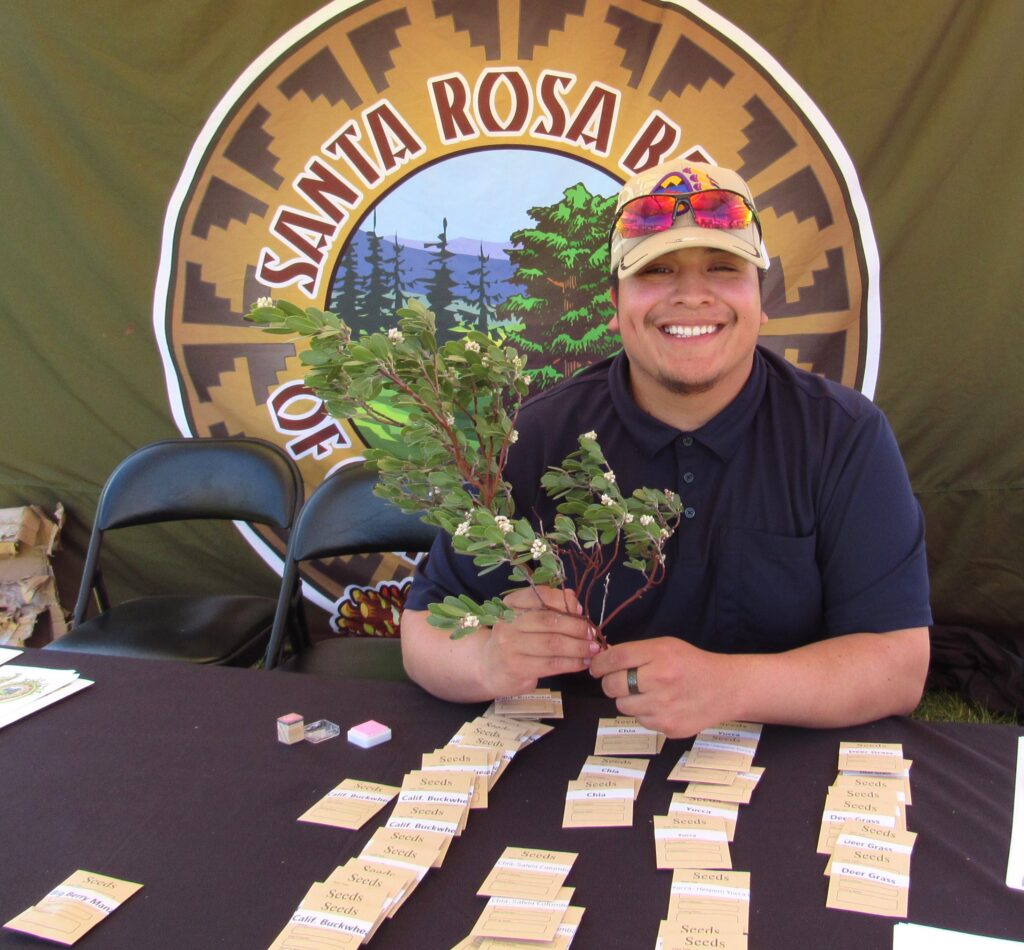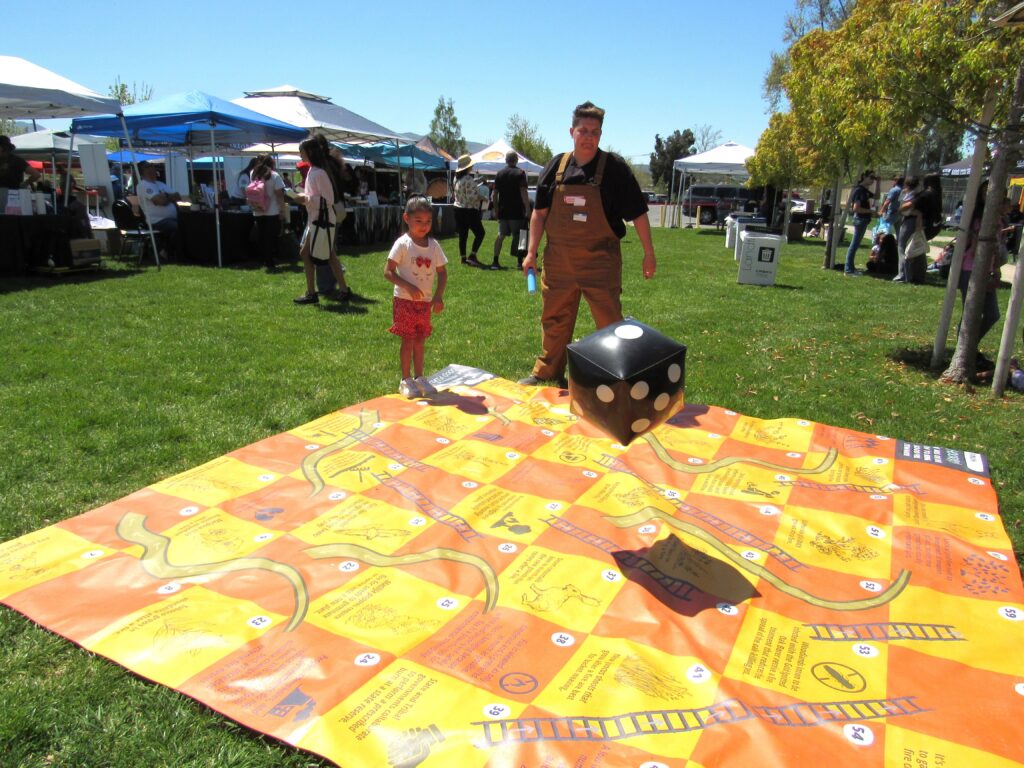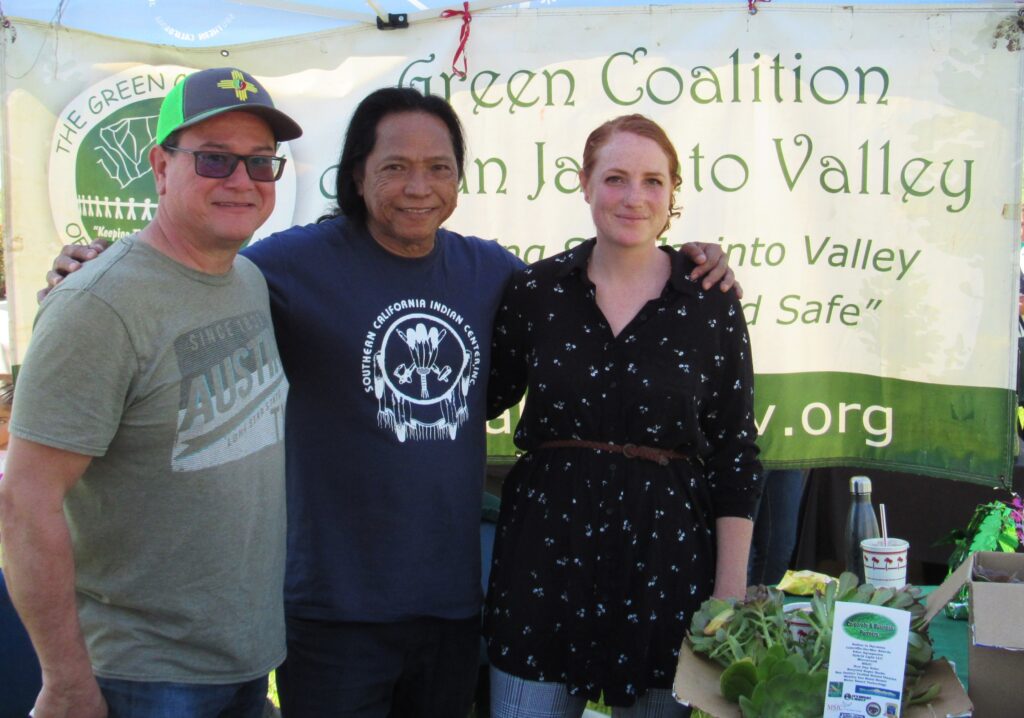The Soboba Tribal Environmental Department hosted its annual Earth Day event on April 11, attracting nearly 700 visitors to the Soboba Sports Complex’s grassy outdoor area. With 45 vendors, there was plenty to learn about and do.

Christian Aceves, STED’s Environmental Director, said his favorite part of the event was his ability to connect with the Soboba community and interact with the vendors that attended. “Thanks to my wonderful team for those months of preparation and thanks to the great Soboba support system, to whom without the event would not have been as successful. Their support opened me up to enjoy the event for what it is: an opportunity to connect and engage with the community.”
He also enjoyed visiting the booth for Gil’s Critters, a popular vendor making its first appearance at the annual event. “It was really fun learning about some of the local critters that call Soboba and the greater region home,” Aceves said.

Christine Rodriguez, Environmental Administrative Assistant for STED, said her favorite part was seeing the result of everyone’s hard work. “Attendees and vendors were having fun visiting booths, our team wasn’t overly stressed, and we had a great group of volunteers. A huge shout-out to Tribal TANF and Parks and Rec for helping out with the event,” she said. “We appreciate all the volunteers so much; without them things would not have gone so smoothly.”
Soboba Parks & Recreation helped visitors make California native seed bombs to take home to plant in their own gardens while announcing upcoming activities. The Soboba Cultural Department, along with distributing fresh produce grown in the Soboba Cultural Garden, shared information about companion planting, a Native American gardening technique. It consists of growing two plants near each other to benefit both. One example is, “3 Sisters (corn, beans, squash) nurture each other like family when planted together.” Companion planting is considered sustainable, as it gives back to the earth the nutrients that it removes from the soil. It is said to reduce pests, attracts pollinators, boosts growth and overall plant health.

The Ramona Indian Reservation, home to the Ramona Band of Cahuilla, encompasses 560 acres and is located in the southern San Jacinto Mountains, near Anza. Its remote location contributed greatly to the Tribe’s decision to live off-grid. Doing this has allowed the Ramona Band to develop renewable energy sources to power homes, buildings and infrastructure on the Reservation; limited its dependency on fossil fuels; reduced its carbon footprint; and reduced impacts to the environment. Living off-grid has also allowed the Ramona Band to protect and preserve culturally significant sites through the avoidance of these areas. Off-grid living can pose challenges to those who are new to the lifestyle, but those who are willing to “unplug” from the grid will live cleaner, a benefit to them and the environment.
The Pechanga Environmental Department booth shared a quote from David Ipina of the Yurok Tribe, who said, “Mother Earth is not a resource, she is an heirloom.” Megan Poffinbarger encouraged visitors to pin a climate pledge. They could sign pre-printed pledges such as agreeing to turn off all lights when not in use and replacing bottled water with reusable water bottles or create one of their own and then pin the paper “leaf” onto the tree poster.


Other booths offered fun crafts such as Soboba Casino Resort’s marketing team making biodegradable slime and Soboba Housing helping paint colorful suncatchers. Tribal Family Services offered earth-themed stress balls and a poster for guests to add their green or blue fingerprints.

The Green Coalition of San Jacinto Valley is a local nonprofit that partners with businesses and government entities to promote green living. It is currently working with clean technology startup companies to help pave the way for green businesses to move to the San Jacinto Valley. For more information, contact President Wiggs Mendoza at 951-929-0854 or [email protected].

Contributions from Noli Indian School students in grades 6-12 made for an interesting competition with visitors receiving a ticket to vote for their favorite poster. The theme of this year’s Earth Day is Planet vs. Plastics and many students, who worked as a team within each class, designed posters to promote the idea of using less plastic. One that showed the types of plastic items that belong in a recycling bin at a park carried the message: “Live Green to See More Green.”
First place in the Noli Student Art Contest went to Jay Dagostino’s fifth period class, who will receive a class pizza party and second place went to Sabrina Sobel Smith’s fourth period class who will receive an ice cream party. Winning posters are being displayed on Tribal Administration department doors.

Visitors were given a bingo-like game card upon checking in and at each vendor booth they visited, one of the squares was stamped. When the card was completed with 24 stamps, they could deposit it into the bin for a chance to win one of 12 unique raffle prizes. These included a solar power bank, an America the Beautiful National Park pass, an air purifier tower and a Celestron travel telescope.
Aceves said his team worked together to come up with what they felt were environmentally influenced prizes that the attendees would be excited for. He said two of the prizes were donated by vendors Morongo Environmental Protection Department and Native American Environmental Protection Coalition.
STED’s Environmental Specialist Katelyn Thomas said she enjoyed seeing everyone interacting and learning new things about the environment. “Earth Day highlighted our goal to educate the community on environmental topics and foster discussion,” she said.
Aceves said the Tribal youth and the Tribal community members were interviewed at random in a way to increase feedback and better improve future events. Overall, the Tribal Community and attendees enjoyed themselves. They raved about the good food (provided by In-N-Out Burger), appreciated the educational vendors, and loved their Soboba Tribal Environmental Department swag.
“When asked how they would improve the event, a Tribal youth member stated, ‘a water slide would be cool or a cotton candy machine!’ When asked which booth they liked the most, a Tribal youth member stated, ‘Gil’s Critters… because it has a lot of cool animals.’ Lastly, when asked which booth they liked the most, a Tribal community member stated, ‘This one [Riverside County Department of Waste Resources], because I know how to compost at home now,’” Aceves shared.
Similarly, vendors were interviewed at random and asked if they would change anything. One vendor stated, “I love it as is and the community always shows up.” Another vendor said, “The music was excellent and fun.” This was provided by DJ Mike Nevarez throughout the event. Many of the vendors said they enjoyed being able to connect with other vendors within their scope of their work.

It is important to note that STED works year-round to help the reservation stay resilient and sustainable through many different programs and projects. Currently it has recycling bins set up around the Tribal Admin building for plastic, aluminum and glass. The department recently began working with Noli and has placed some recycling bins in classrooms and in the quad area where breaks are taken.
“This was actually an idea that the students had come up with and they reached out to us for assistance,” Aceves said. “We also encourage the use of reusable water bottles.”
STED organized a community cleanup two days prior to the Earth Day event, which collected several gallons of paint, oils and e-waste. It will hold another community cleanup event on July 18.
For more information, https://epa.soboba-nsn.gov.


























